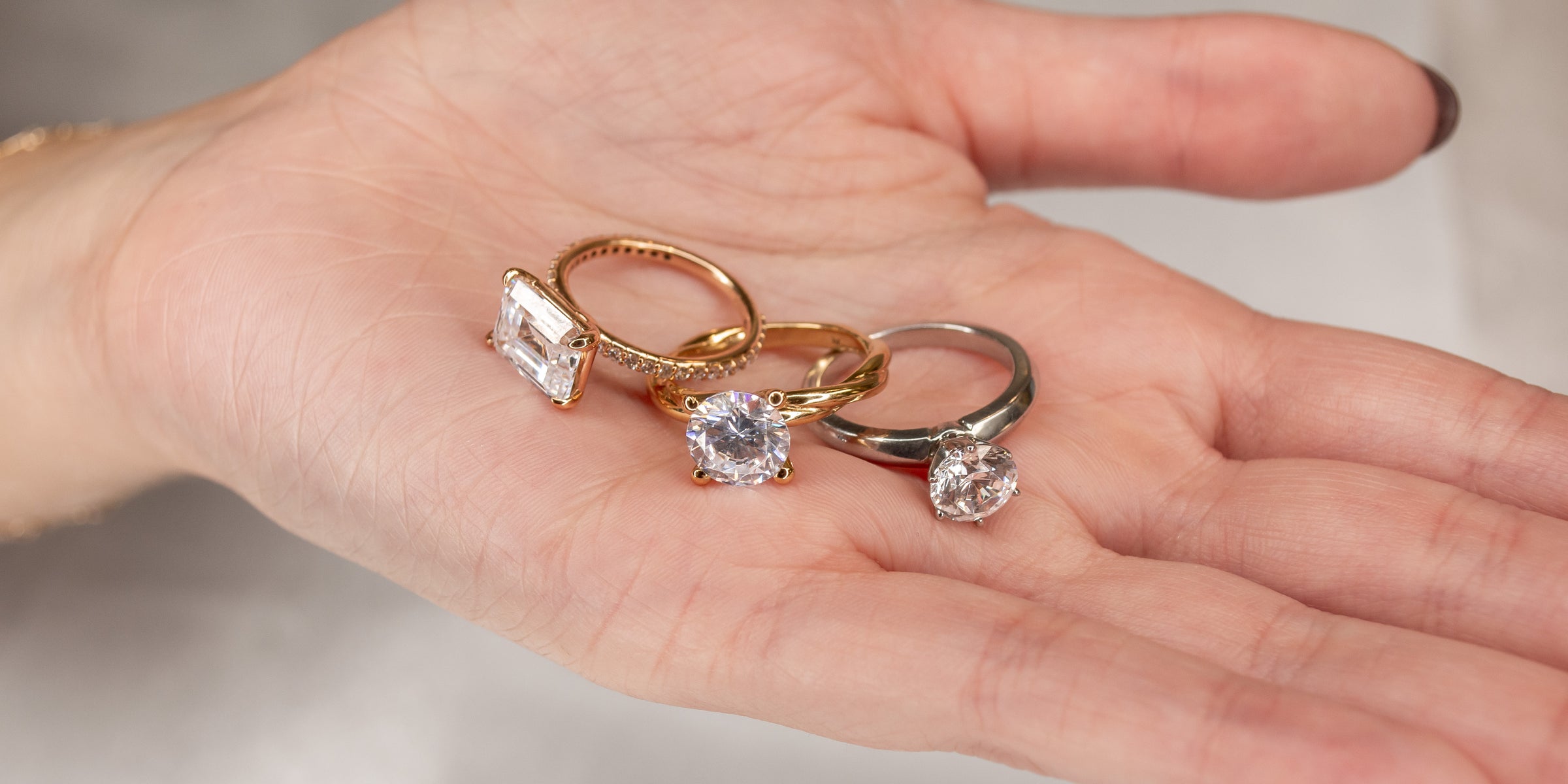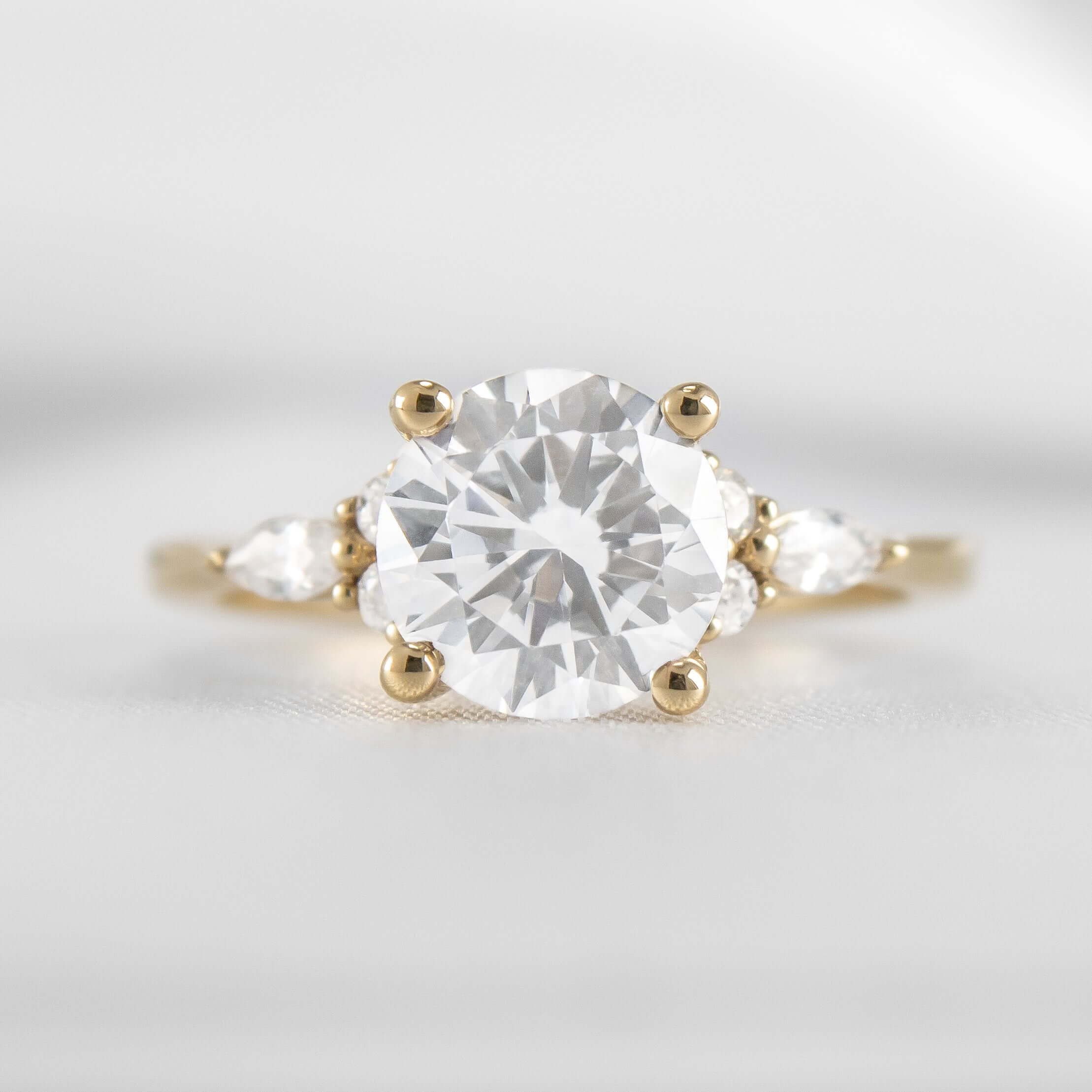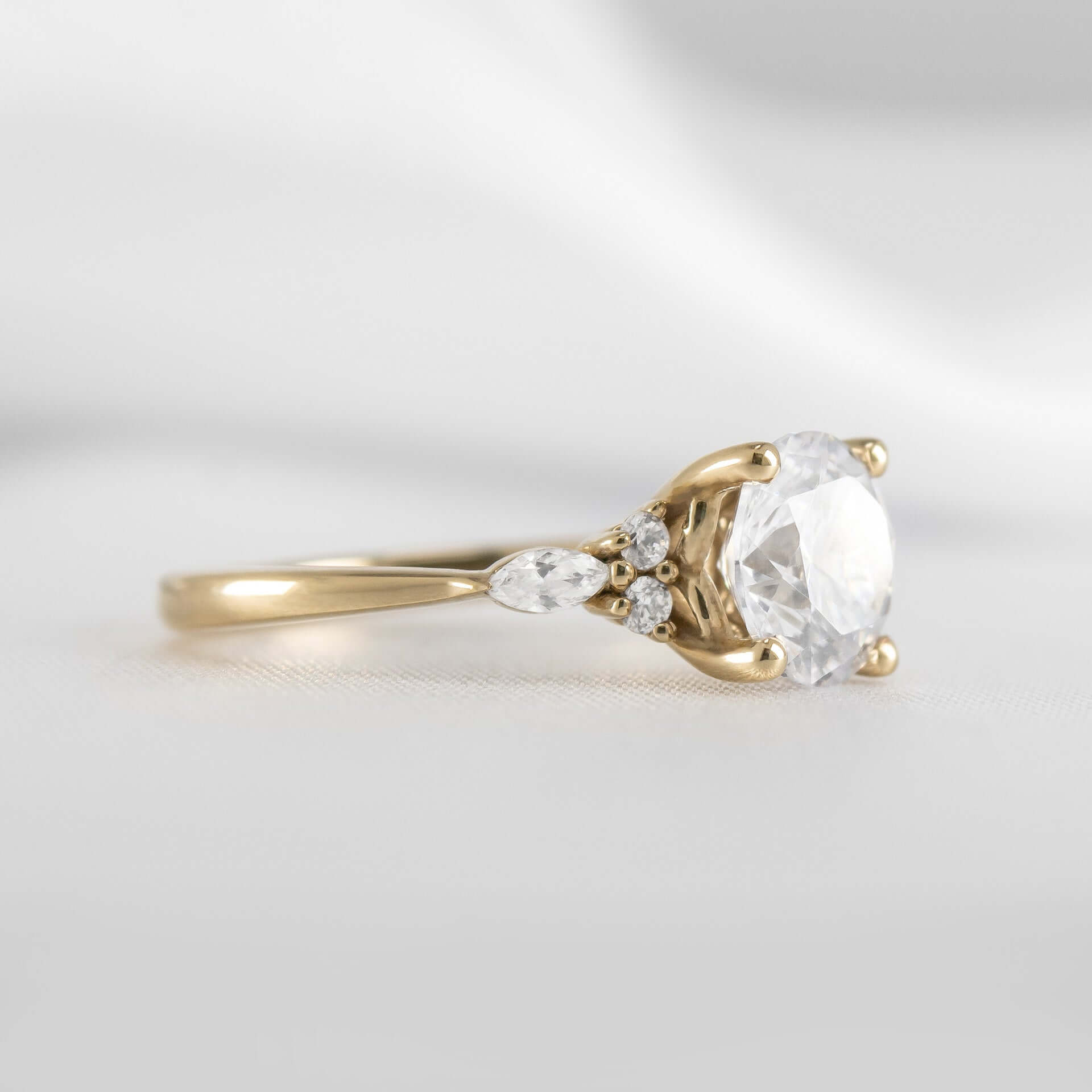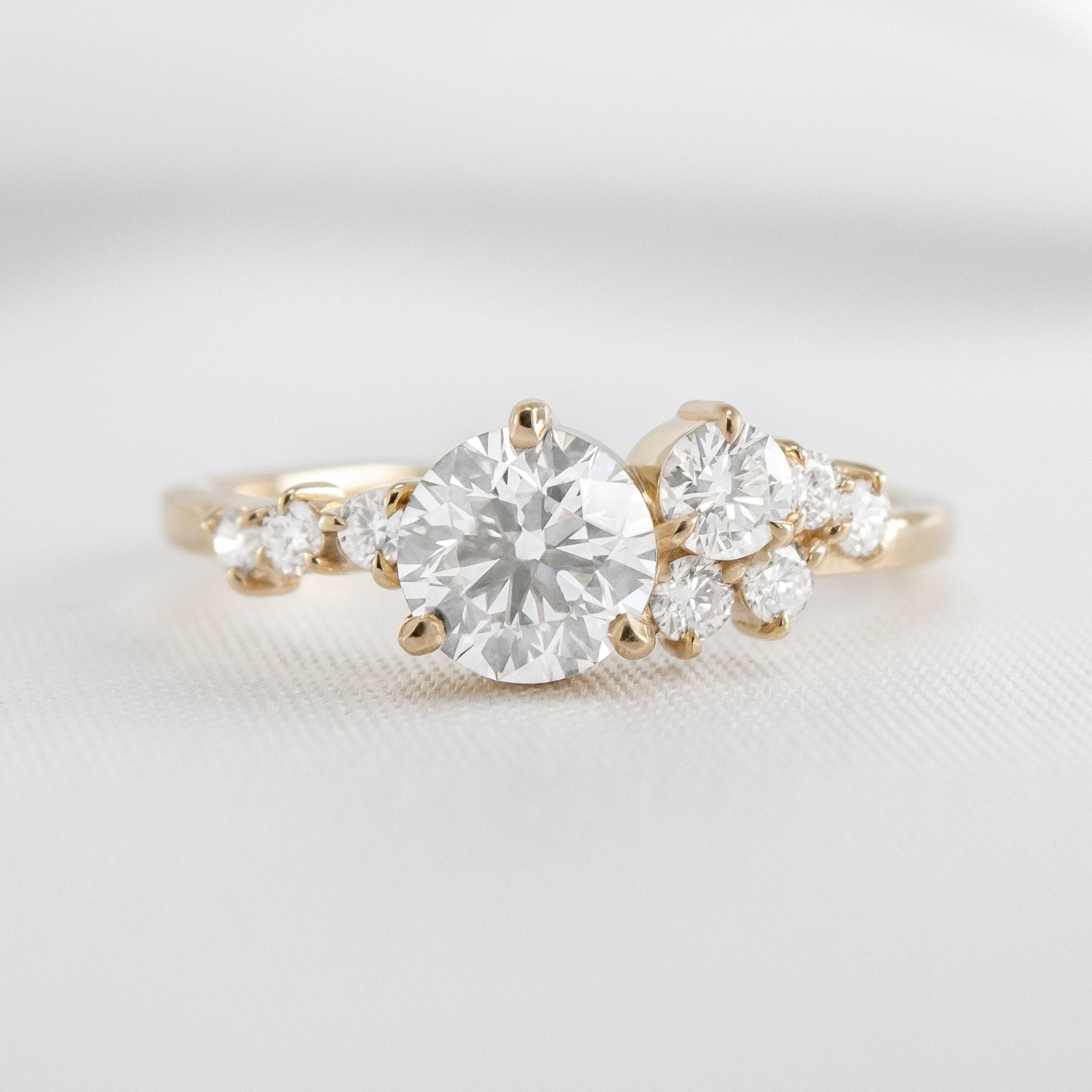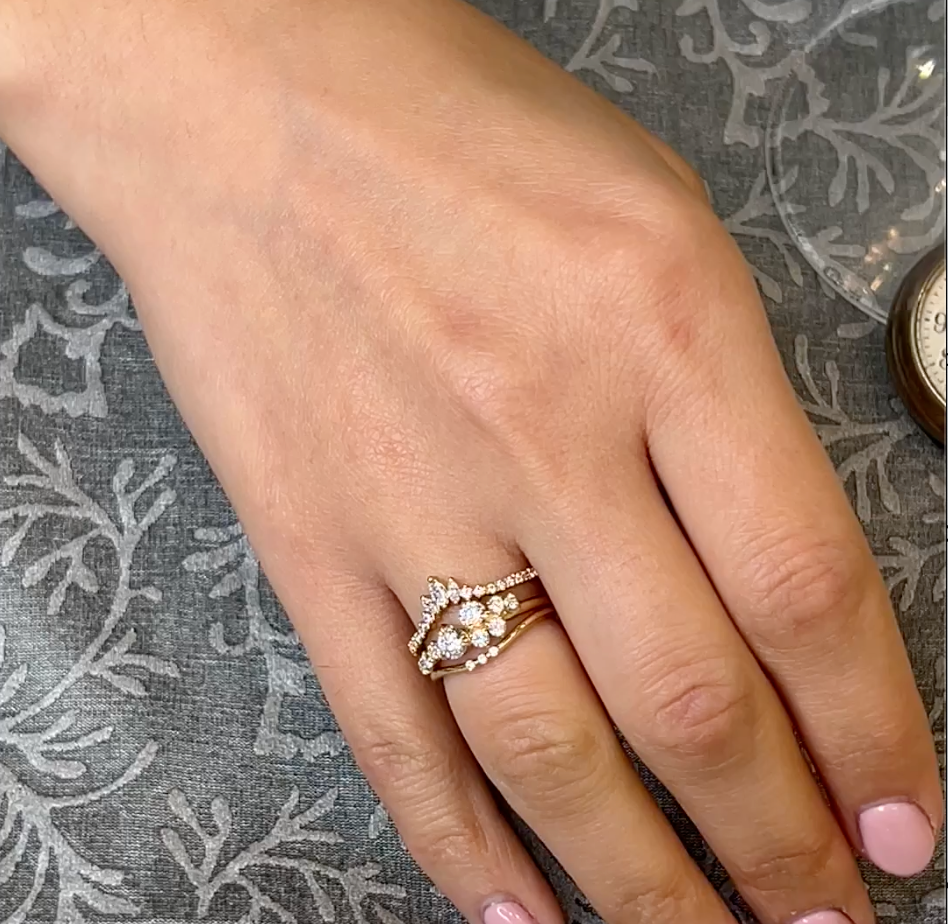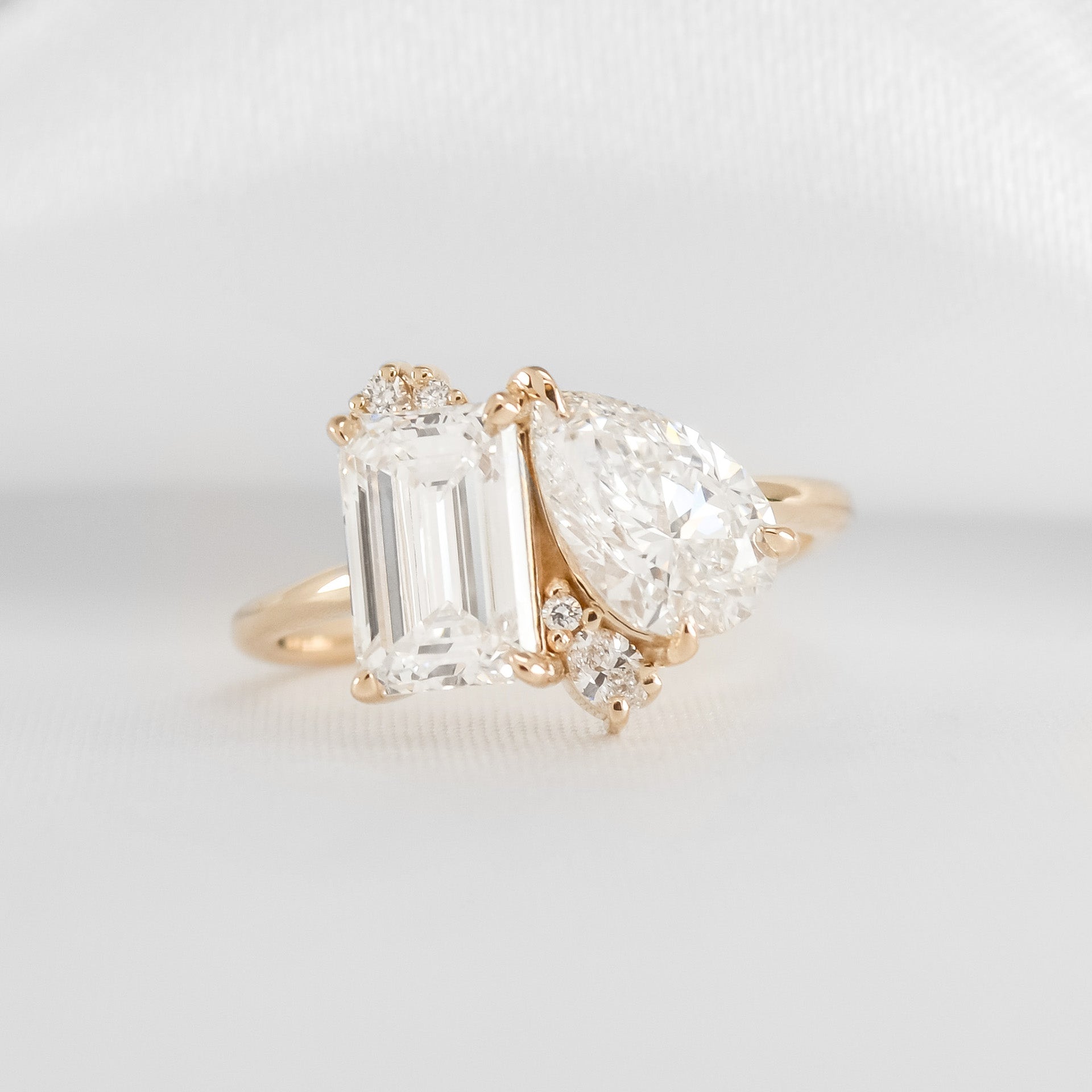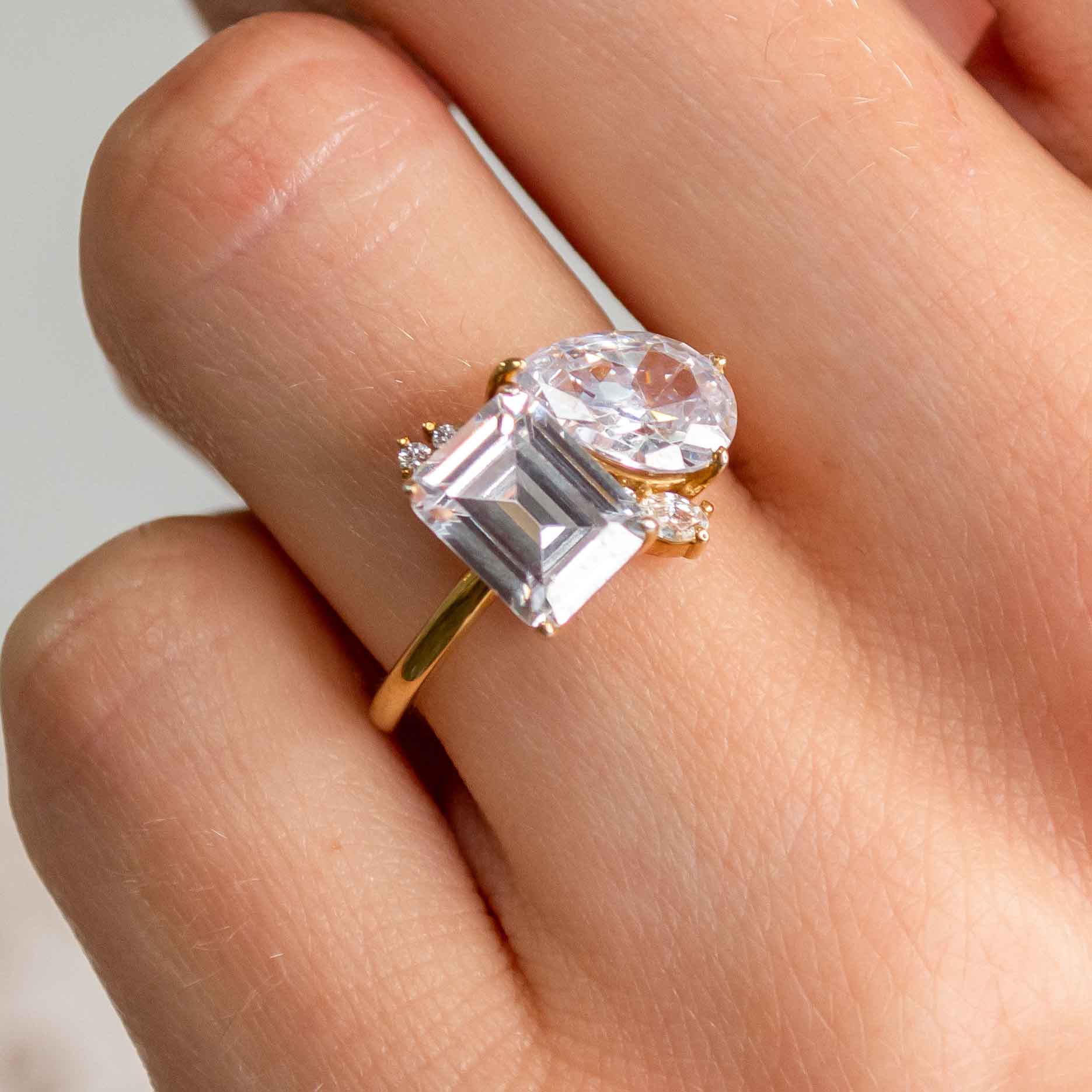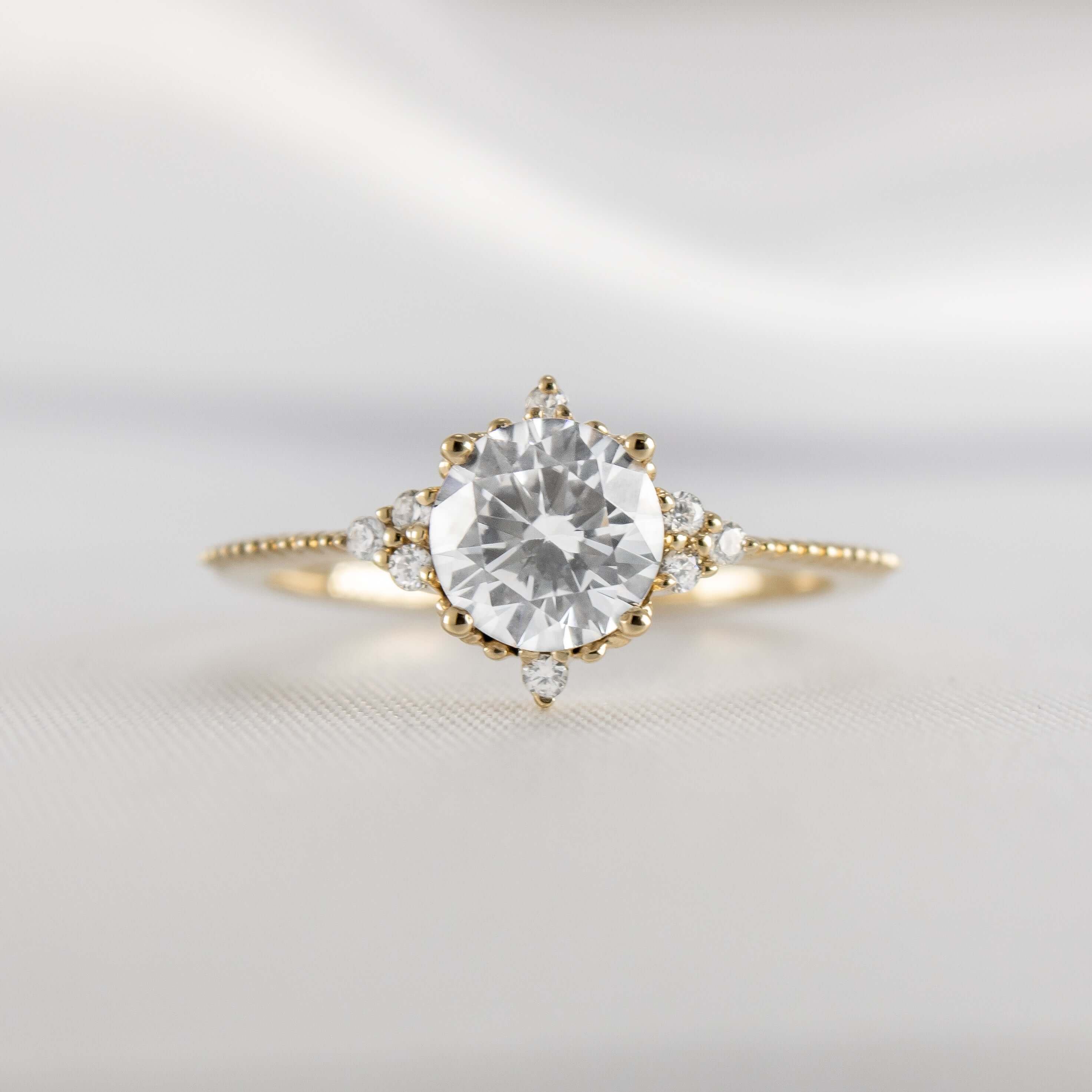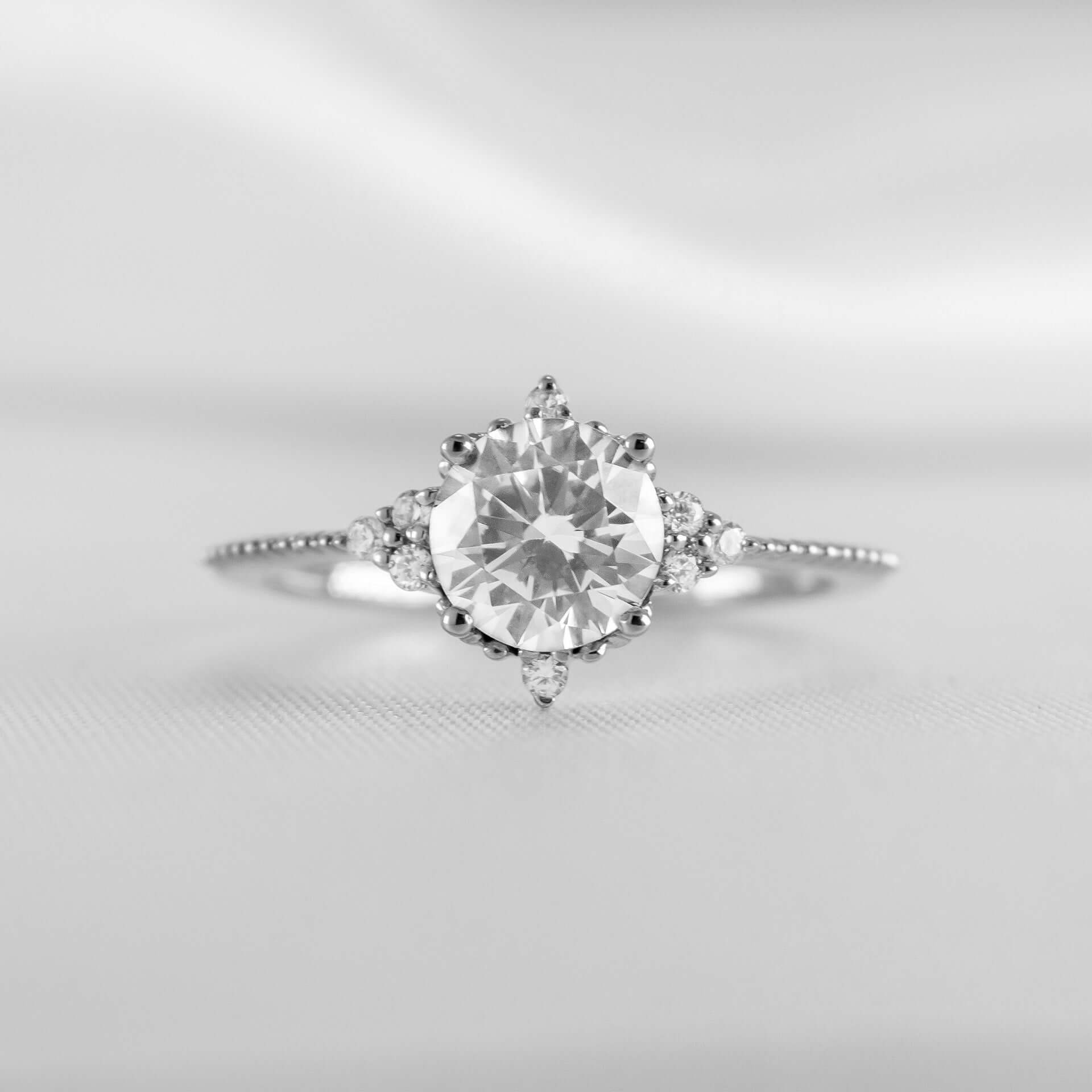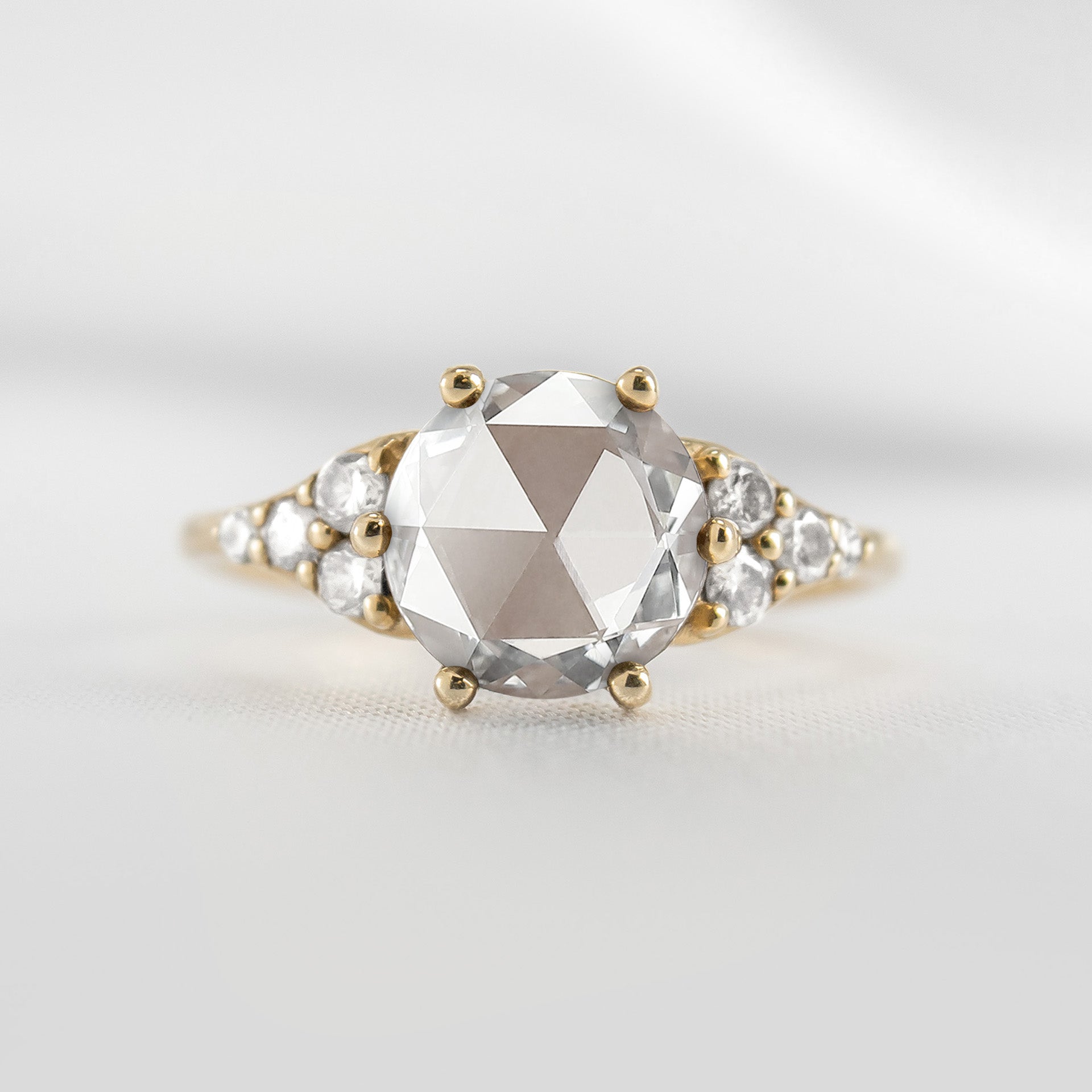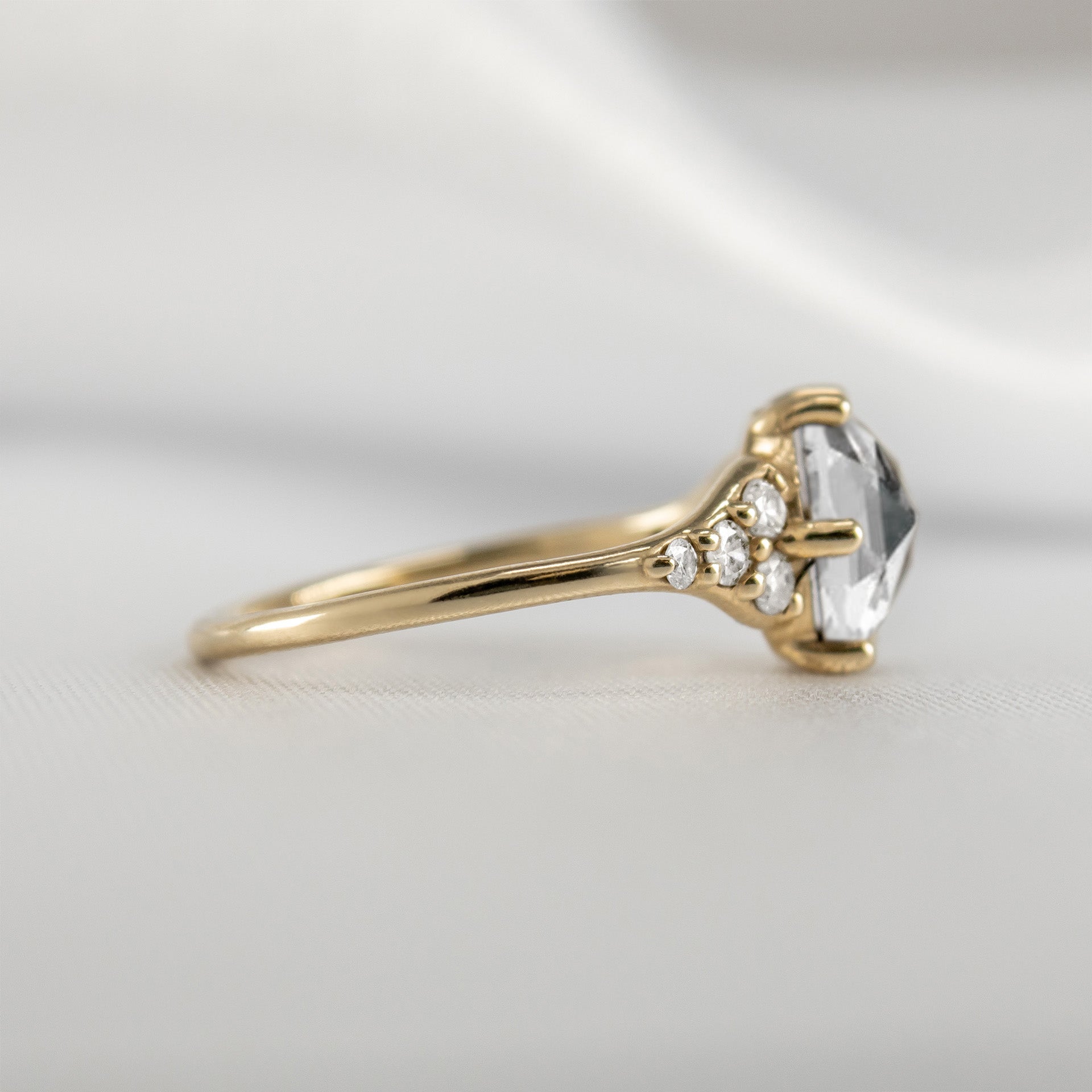Your Guide to the Best Ring Metals for your Engagement Ring
Selecting the perfect engagement or wedding ring begins with the metal choice—a decision that influences not just the look, but the durability and overall feel of the ring. Each metal brings unique qualities and beauty, influencing the ring’s appearance, durability, and price. Let us guide you through the world of ring metals to help you find the perfect match for your lifestyle and preferences. At Lisa Robin, we offer engagement rings in 14K gold or platinum as our standard, with 10K or 18K available by request, ensuring a balance of aesthetics, durability, and cost that’s just right for you.
Types of Ring Metals for Engagement Rings
White Gold Ring Metal
White gold combines pure gold with white metals like palladium and silver, resulting in a stunning, polished finish. Rhodium plating enhances its brilliance and provides a hypoallergenic surface, making it an excellent choice for those with sensitive skin. Though durable, rhodium plating can wear over time and may require occasional re-plating to maintain its pristine look.
Why Choose White Gold?
- Popular Choice: 14K white gold dominates over 40% of online engagement ring searches.
- Cost-Effective Alternative to Platinum: Offers a luxurious white-metal look at a more affordable price.
- Versatile Style: Complements diamonds beautifully, enhancing their brilliance.
Yellow Gold Ring Metal
Yellow gold exudes a timeless warmth and elegance, making it a traditional favorite for wedding rings. Crafted from a blend of pure gold, copper, and silver, its color and hardness vary based on the karat level. 14K yellow gold balances durability and vibrancy, while 18K offers a richer hue but softer composition. Lisa Robin offers engagement rings as a standard in 14K gold, with 10K or 18K available by request. We feel strongly that 14K balances color aesthetics, durability, and cost nicely.
Why Choose Yellow Gold?
- Trend Revival: Currently accounts for 20% of engagement ring selections, reflecting its resurgence in popularity.
- Everyday Jewelry Match: Complements other gold jewelry seamlessly.
- Classic Appeal: Perfect for those drawn to traditional designs.
Rose Gold Ring Metal
Romantic and distinctive, rose gold blends pure gold with copper, creating its signature blush hue. This metal is often chosen for its vintage charm and is increasingly popular for unique or bi-colored designs. Like yellow gold, its durability depends on the karat level.
Why Choose Rose Gold?
- Romantic Look: Ideal for those seeking a unique and feminine touch.
- Versatile Pairing: Pairs beautifully with white or yellow gold in mixed-metal designs.
- Growing Popularity: Represents about 5% of engagement ring searches.
Uncovering The Secrets of Colored Gold
Colored gold has mesmerized jewelry lovers for centuries with its dazzling hues and unique charm. In this comprehensive guide, we explore the fascinating world of colored gold, uncovering its secrets and showcasing its captivating variations.
Platinum Ring Metal
Known for its rarity and durability, platinum is the most prestigious option for engagement rings. Its naturally white sheen never fades, making it a popular choice for those seeking a luxurious and hypoallergenic option. Platinum’s softness compared to gold allows it to develop a patina over time, adding to its charm. Lisa Robin offers engagement rings as a standard in platinum for those seeking unparalleled elegance.
Why Choose Platinum?
- Enduring Beauty: Retains its color and never requires plating.
- Strength and Purity: Typically 95% pure, making it hypoallergenic and ideal for intricate designs.
- Long-Term Value: A premium investment that lasts a lifetime.
Alternative Metals for Wedding Rings: Titanium, Tungsten, and Ceramic
For couples seeking something unconventional, alternative metals offer durability and a modern aesthetic. Titanium is lightweight and hypoallergenic, tungsten is incredibly scratch-resistant, and ceramic provides a sleek and stylish finish. Lisa Robin offers some wedding rings in these alternative metals, ideal for active lifestyles or those seeking a unique look.
Why Choose Alternative Metals?
- Durability: Perfect for everyday wear.
- Affordability: Cost-effective without compromising style.
- Unique Look: Stand out with contemporary designs.
How to Pick the Best Metal for Your Engagement Ring
Consider the Cost
Different metals come with varying price points. Platinum, for instance, is more expensive than gold but offers unparalleled durability and rarity. White gold provides a luxurious look at a fraction of the cost.
Keep the Center Diamond in Mind
Certain metals complement diamonds better. White metals like platinum or white gold enhance a diamond’s brilliance, while yellow and rose gold add warmth and character.
Take Your Lifestyle Into Account
Active lifestyles or occupations involving frequent hand use may benefit from more durable metals like platinum or 14K gold. For less active lifestyles, softer metals like 18K gold or even alternative metals might be suitable.
FAQs about Engagement Ring Metals
Platinum is naturally white, dense, and hypoallergenic. It’s heavier and often considered the ultimate luxury choice. White gold is more affordable, has a bright appearance, and is plated with rhodium for added brilliance. Both are beautiful—your choice depends on whether you prefer weight and prestige (platinum) or a lighter feel and lower cost (white gold).
No, rose gold doesn’t fade—but it can deepen slightly in color as it develops a warm patina. That’s part of its charm. Unlike plated metals, its blush tone is solid throughout.
Gold and platinum are the easiest metals to resize, while alternative metals like tungsten or ceramic are not be adjustable.
At Lisa Robin, you can choose from yellow gold, white gold, rose gold, and platinum. Each has its own personality—classic yellow, modern white, romantic rose, and timeless platinum. All of our metals are sustainably sourced.
The “k” refers to karat, or purity of gold:
- 14k gold: 58.3% pure gold, balanced with alloys for strength. A great everyday choice.
- 18k gold: 75% pure gold, richer in color, slightly softer but still durable.
Both are excellent options—your decision often comes down to color preference and lifestyle.
All precious metals used in fine jewelry are strong enough for daily wear, but platinum is the most durable. It develops a satiny finish over time called “patina,” which many people love. 14k gold is also excellent for durability, especially for active lifestyles.
Yes. Every ring we make is crafted using recycled precious metals whenever possible. We believe luxury should never come at the expense of the earth.
Absolutely. Mixing metals is a modern, stylish way to create contrast and visual interest. Pair yellow gold with platinum, or rose with white gold—the combination is uniquely yours.
Yes, white gold is rhodium-plated for its brilliant finish. Over years of wear, that plating may thin. Replating is a simple and routine service to refresh your ring’s appearance.
- Gold (14k or 18k): Gentle cleaning with mild soap and water, store separately to avoid scratches.
- Platinum: Clean the same way; patina can be polished if you prefer a brighter finish.
- All metals: Avoid harsh chemicals, chlorine, and abrasive cleaners.
At Lisa Robin, we’re committed to sustainability by using recycled metals in our designs.
Our Rejewel process transforms old or heirloom jewelry into stunning new designs, offering an eco-friendly way to cherish your memories.
In Conclusion
Choosing the right metal for your engagement or wedding ring is a personal journey that balances style, practicality, and budget. Let Lisa Robin guide you every step of the way to create a ring as unique as your love story. Book an appointment today to design your custom engagement ring or explore our collection of timeless styles, crafted to suit your unique love story.




